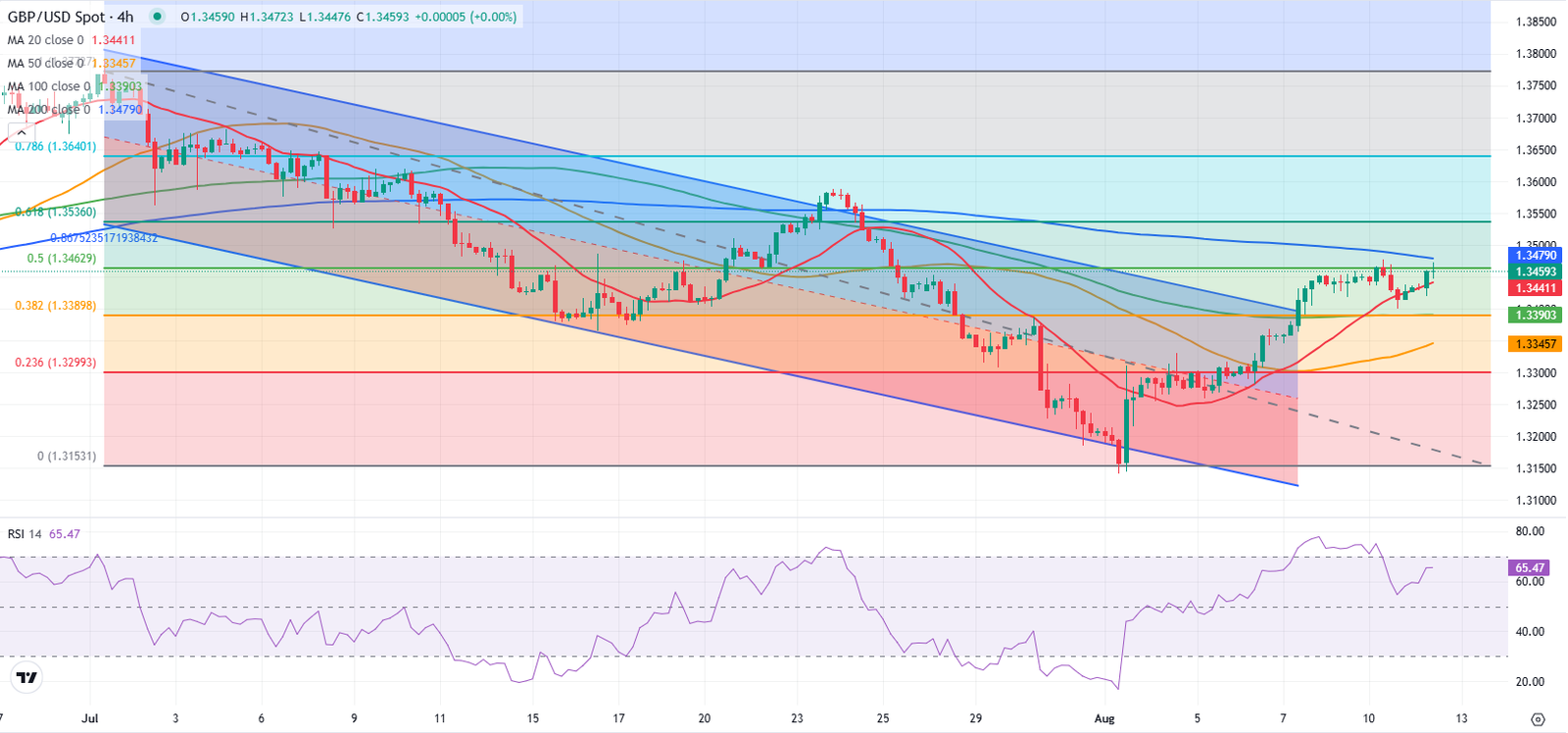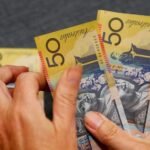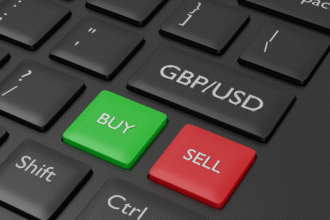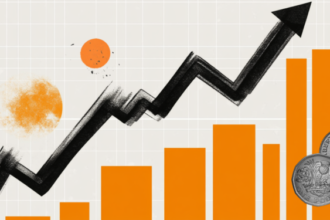- GBP/USD trades in positive territory above 1.3450 on Tuesday.
- The UK ILO Unemployment Rate stood unchanged at 4.7% in the three months to June.
- The annual CPI in the US is expected to edge higher to 2.8% in July.
GBP/USD closed marginally lower on Monday and snapped a six-day winning streak. In the European session on Tuesday, the pair regains its traction and trades above 1.3450 as market focus shifts to US inflation data.
British Pound PRICE Last 7 days
The table below shows the percentage change of British Pound (GBP) against listed major currencies last 7 days. British Pound was the strongest against the Japanese Yen.
| USD | EUR | GBP | JPY | CAD | AUD | NZD | CHF | |
|---|---|---|---|---|---|---|---|---|
| USD | -0.33% | -1.29% | 0.88% | 0.09% | -0.33% | -0.11% | 0.38% | |
| EUR | 0.33% | -0.97% | 1.24% | 0.43% | -0.09% | 0.15% | 0.71% | |
| GBP | 1.29% | 0.97% | 2.20% | 1.42% | 0.90% | 1.13% | 1.58% | |
| JPY | -0.88% | -1.24% | -2.20% | -0.78% | -1.12% | -1.00% | -0.50% | |
| CAD | -0.09% | -0.43% | -1.42% | 0.78% | -0.48% | -0.28% | 0.16% | |
| AUD | 0.33% | 0.09% | -0.90% | 1.12% | 0.48% | 0.27% | 0.69% | |
| NZD | 0.11% | -0.15% | -1.13% | 1.00% | 0.28% | -0.27% | 0.51% | |
| CHF | -0.38% | -0.71% | -1.58% | 0.50% | -0.16% | -0.69% | -0.51% |
The heat map shows percentage changes of major currencies against each other. The base currency is picked from the left column, while the quote currency is picked from the top row. For example, if you pick the British Pound from the left column and move along the horizontal line to the US Dollar, the percentage change displayed in the box will represent GBP (base)/USD (quote).
The United States (US) and China agreed to extend the trade truce for 90 days. The US Dollar (USD) benefited from this development and caused GBP/USD to stretch lower on Monday.
Early Tuesday, the UK’s Office for National Statistics (ONS) reported that the ILO Unemployment Rate held steady at 4.7% in the three months to June. In the period, the annualized wage inflation, as measured by the change in the Average Earnings Excluding Bonus, was unchanged at 5%. With these figures underscoring the Bank of England’s (BoE) cautious stance to policy-easing, Pound Sterling stays resilient against its peers.
On a yearly basis, the Consumer Price Index (CPI) in the US is forecast to rise 2.8% in July, at a slightly stronger pace than the 2.7% increase recorded in June. On a monthly basis, the CPI and the core CPI, which excludes volatile food and energy prices, are forecast to increase by 0.2% and 0.3%, respectively.
The CME FedWatch Tool currently shows that markets are nearly fully pricing in a 25 basis points (bps) Federal Reserve (Fed) rate cut in September, while seeing about a 43% probability of the Fed lowering the policy rate by a total of 75 bps in the remainder of the year.
Hence, a stronger-than-forecast monthly core CPI print could boost the US Dollar (USD) with the immediate reaction. On the other hand, a soft reading in this data could allow markets to continue to lean toward three rate cuts this year and trigger a leg lower in the USD.
GBP/USD Technical Analysis

The Relative Strength Index (RSI) indicator on the 4-hour chart stays above 60 after declining from above-70 on Monday, suggesting that the bullish bias remains intact following a technical correction.
On the upside, the 200-period Simple Moving Average (SMA) aligns as the first resistance at 1.3480 ahead of 1.3540 (Fibonacci 61.8% retracement of the latest downtrend) and 1.3600 (static level, round level).
Looking south, support levels could be spotted at 1.3440 (20-period SMA), 1.3400-1.3390 (round level, static level, 100-period SMA, Fibonacci 382% retracement) and 1.3350 (50-period SMA).
Inflation FAQs
Inflation measures the rise in the price of a representative basket of goods and services. Headline inflation is usually expressed as a percentage change on a month-on-month (MoM) and year-on-year (YoY) basis. Core inflation excludes more volatile elements such as food and fuel which can fluctuate because of geopolitical and seasonal factors. Core inflation is the figure economists focus on and is the level targeted by central banks, which are mandated to keep inflation at a manageable level, usually around 2%.
The Consumer Price Index (CPI) measures the change in prices of a basket of goods and services over a period of time. It is usually expressed as a percentage change on a month-on-month (MoM) and year-on-year (YoY) basis. Core CPI is the figure targeted by central banks as it excludes volatile food and fuel inputs. When Core CPI rises above 2% it usually results in higher interest rates and vice versa when it falls below 2%. Since higher interest rates are positive for a currency, higher inflation usually results in a stronger currency. The opposite is true when inflation falls.
Although it may seem counter-intuitive, high inflation in a country pushes up the value of its currency and vice versa for lower inflation. This is because the central bank will normally raise interest rates to combat the higher inflation, which attract more global capital inflows from investors looking for a lucrative place to park their money.
Formerly, Gold was the asset investors turned to in times of high inflation because it preserved its value, and whilst investors will often still buy Gold for its safe-haven properties in times of extreme market turmoil, this is not the case most of the time. This is because when inflation is high, central banks will put up interest rates to combat it.
Higher interest rates are negative for Gold because they increase the opportunity-cost of holding Gold vis-a-vis an interest-bearing asset or placing the money in a cash deposit account. On the flipside, lower inflation tends to be positive for Gold as it brings interest rates down, making the bright metal a more viable investment alternative.





















